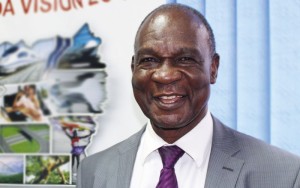 Uganda has established itself as one of East Africa’s most attractive destinations for foreign investors due to its natural assets and security
Uganda has established itself as one of East Africa’s most attractive destinations for foreign investors due to its natural assets and security
Uganda has grown not only in population size, from 14 million in 1986 to more than 36 million today, but also in economic might and potential.
“Uganda has attained strong growth in financial intermediation while maintaining a very sound banking system,” says Dr Emmanuel Tumusiime-Mutebile, Governor of the Bank of Uganda. “In real terms, bank credit to the private sector has expanded five-fold since the turn of the century, with average annual growth of 12 per cent. The banking system as a whole has remained very soundly managed, well capitalised and profitable. As of June 2014, the average core capital to risk weighted assets ratio of commercial banks in Uganda was 20.3 per cent and the average return on assets over the 12 months ending in June 2014 was 2.1 per cent.”
Securing continued growth has been the focus of Dr Wilberforce Kisamba- Mugerwa, Chairman of the National Planning Authority, the body created in 2002 that is behind Uganda Vision 2040, the country’s plan to secure future prosperity.
The framework for the strategy was first set out in 2007 and was developed alongside Uganda’s first National Development Plan, which set out reform and growth strategies between 2010 and 2015.
“We reduced poverty from 56 per cent in 1992/93 to 24.5 per cent in 2009/10, and now it is at 19.7 per cent,” explains Dr Mugerwa. “However, having done that, we realised poverty eradication alone was related to access to education, health, water and sanitation, and food security.”
The costs of reforming these sectors required substantial investment, and for that government revenues had to increase, as they will in the future.
“The focus on poverty eradication won’t succeed until we blend it with wealth creation,” continues Dr Mugerwa, and that is the focus of the 2040 plan. It has been benchmarked on countries such as Malaysia, Singapore and South Korea, which 40 years ago were as poor as Uganda.
The plan is focused on the development of four main areas, namely: natural resources development, agribusiness, infrastructure and energy. Foreign investment will play a key role, enabling accelerated growth across a range of projects, such as the construction of more than 1600kms of standard gauge railway and large swathes of motorways.
There are also projects to build new energy plants including Karuma 600MW and Isimba 140MW, along with improving the extraction of minerals, such as iron ore for steel.
Uganda is also poised to profit from the discovery of large oil and gas deposits, which are set to be exploited with the assistance of international investment and expertise. The reserves, mainly found in the western region of the country, will also provide Uganda with a substantial boost to its economy, and ensuring economic prosperity remains once the fossil fuels have gone has become a central tenet of the country’s long-term economic plan.

Uganda has grown not only in population size, from 14 million in 1986 to more than 36 million today, but also in economic might and potential
Strategies include spending parts of the oil and gas dividend on improving infrastructure and developing sectors of the economy such as agriculture and manufacturing. That will then enable the Ugandan economy to grow organically but foreign investment is also being welcomed.
Indeed for Vision 2040 to succeed, Dr Mugerwa expects private investors to work closely with the public sector. “We are trying to encourage the government to invest in strategic areas where the private sector may not easily invest due to heavy capital or long gestation periods,” he explains. A legal framework has also been put in place to facilitate public-private partnerships, while legal and financial regulations are being reformed to ensure a more streamlined and navigable investor environment.
Uganda’s location in the centre of the continent also gives it an immediate advantage over competitors, and another export-related route for future economic growth to neighbouring countries. This, coupled with the country’s sound financial history, is providing security for investors and an ecosystem that is tempting foreign businesses to tap in to the potential of the East African nation.
Expertise and increased ambitions in its agricultural potential are also providing other avenues for Ugandan prosperity, not least with the government’s plan to substantially ramp up its coffee production and invest in manufacturing facilities that will allow raw products to be developed, and in turn offer greater returns that can be shared amongst Uganda’s population and investors. The country’s universal education system is also already delivering skilled graduates to the workforce and the highly educated population is well set to be exploited by the service sector.
Transportation links are also being improved and the government hopes that entrepreneurial Ugandans will make the most of the economic boom to form their own companies and exploit the potential of their expanding economy.
Tourism, as well as energy production and distribution, are other sectors offering the East African country stable growth prospects, while the range of the nation’s industries means a steady platform is being created for long-term economic prosperity.
In turn, the hope is that such prosperity will drive further social improvements, with Vision 2040 designed to ensure that shorter-term goals are achieved and provide a clear roadmap for long-term, seamless Ugandan prosperity.















